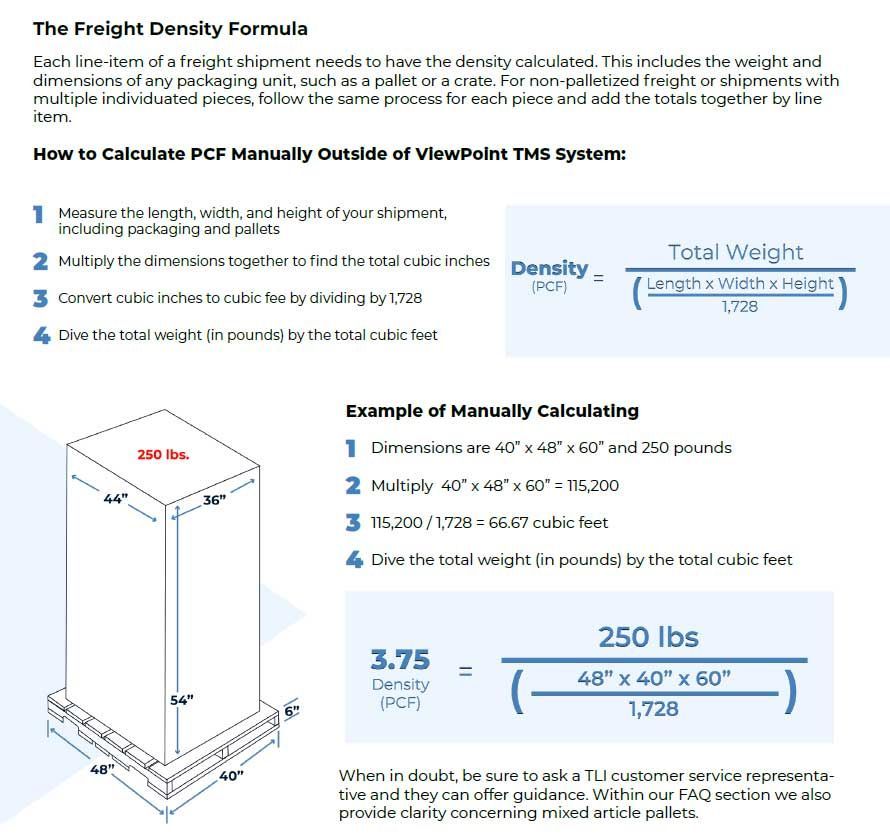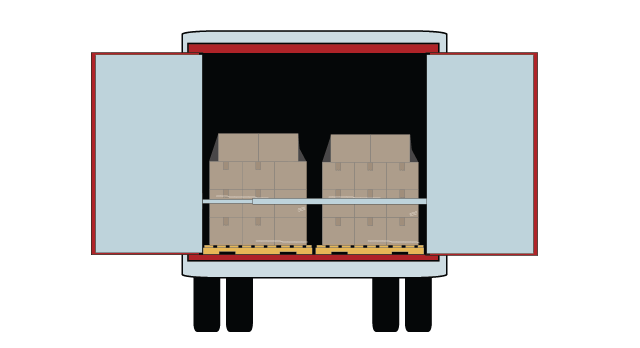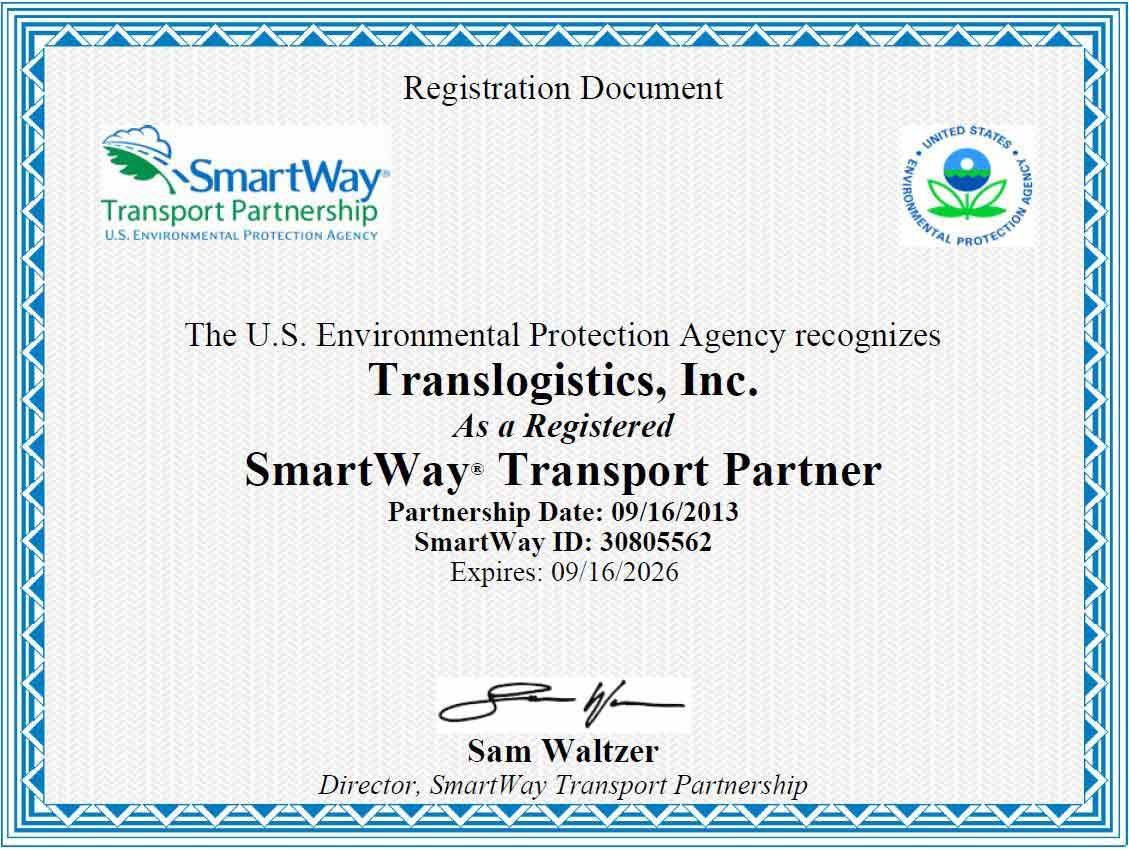Major Update Begins July 19, 2025
Big changes are coming to freight classification. On July 19, 2025, the NMFTA will update the
National Motor Freight Classification (NMFC) system. These updates will impact how
LTL shipments are classified, rated, and billed.
Shippers must understand these NMFC updates to avoid errors. If you're unprepared, your shipment could be misclassified, resulting in extra charges via reclassification accessorial fees.
With over 2,000 item numbers affected, staying current is essential.
The NMFC update reflects a shift toward
density-based classification. The revised system uses new rules to better reflect how freight moves today. Carriers want accurate data on how much space your freight takes—not just what it is.
Sign Up for the Free NMFTA/TLI Webinar
Free NMFTA & TLI Webinar
What Is Changing and Why It Matters
New 13-Tier Density Scale Explained
The update replaces the current 11-tier density scale with 13 tiers. Each tier corresponds to a specific Pounds per Cubic Foot (PCF) range. Here's the new breakdown:
- <1 PCF: Class 400
- 1–2 PCF: Class 300
- 2–4 PCF: Class 250
- 4–6 PCF: Class 175
- 6–8 PCF: Class 125
- 8–10 PCF: Class 100
- 10–12 PCF: Class 92.5
- 12–15 PCF: Class 85
- 15–22.5 PCF: Class 70
- 22.5–30 PCF: Class 65
- 30–35 PCF: Class 60
- 35–50 PCF: Class 55
- 50+ PCF: Class 50
The newly expanded 13-tier density scale introduces greater precision into freight classification. Shipments with even small differences in density will now fall into distinct freight classes, leading to more accurate pricing and fewer disputes. This change reflects the industry’s shift toward more data-driven, accurate freight rating—ensuring shippers only pay for what they are truly routing.
When we rerated historical shipment data against the new scale, the results showed modest swings—typically between a 2–3% increase or savings per shipper. These shifts vary based on freight type and shipping patterns. If you’d like your own data analyzed through our updated rating engine, reach out soon. We are actively working with many clients to provide clear, actionable pricing insights during this NMFC transition.
The Freight Density Formula
Many shipments today are boxes or skids without special handling needs. In these cases, density is the primary factor for classification. That's why NMFTA has prioritized this update.
Freight that doesn’t require extra care or have liability concerns now gets classified by PCF alone. This makes the process faster and easier. It also reduces reliance on outdated commodity descriptions.
The goal is fairness and transparency. When everyone uses the same density scale, pricing aligns better across the supply chain. It also means fewer surprises and more trust between shippers and carriers.
What Is ClassIT+ and How It Helps
ClassIT+ is NMFTA’s updated digital classification tool. It improves how shippers, motor carriers, and 3PLs access NMFC data. You can now look up codes, check updates, and manage items more efficiently.
It works well with platforms like ViewPoint TMS. That means automatic updates, accurate quoting, and streamlined billing. You no longer need to guess or manually cross-check codes.
ClassIT+ supports real-time decision-making. Shippers can quickly adapt to changes without disrupting workflows. This digital shift makes freight classification simpler and smarter. We can confirm that TLI utilizes ClassIt and we are updating the NMFC codes and density tiers for our customers to ensure the transition is smooth and easy.
ViewPoint TMS also includes a built-in density calculator. Enter your shipment’s weight and dimensions, and the system does the math. It
determines the correct freight class instantly.
This automation prevents mistakes. It also auto-tenders the shipment to the right carrier using the correct class for pickup. No more manual entry or outdated class codes, and no more manually having to schedule each pickup.
Best of all, ViewPoint TMS keeps up with NMFC updates. The platform adjusts when the rules change. You stay compliant,
avoid reclassification fees, and save time.
Operational Impacts for Shippers
These updates affect more than just codes. They touch every part of your shipping process. If you opt into not an alternative to ViewPoint TMS (which can automatically determine the proper PCF and freight class) it is critical to understand how to manually
determine the PCF to be able to select the appropriate corresponding freight class. If your team or
TMS isn’t ready, you risk errors in quoting, booking, and billing.
Misclassifications often lead to reclass charges and invoice disputes. They also slow down carrier payments and create tension in logistics relationships. Without preparation, the July 2025 rollout could create delays and friction across your supply chain.
TLI is actively reviewing the NMFC bulletin and updating ViewPoint TMS. We’re analyzing historical data and rerating freight based on the new scale. As has been stated, on average, the changes only shift rates by about 1-3%.
We’re also integrating dimensionalizer tech into ViewPoint TMS. This tool, integrates into your scale, and captures exact dimensions of parcels and LTL shipments for accurate freight class calculation.
Our goal is to reduce your risk. With automated updates and expert analysis, TLI ensures your freight stays compliant with minimal disruption.
Key Steps to Prepare for the Change
Contact TLI
Frequently Asked NMFC Questions (FAQs)
What if I ship multiple commodities on one pallet?
The NMFC allows you to calculate density per unit or for the total shipment. Just provide full dimensions and weight to stay compliant.
So shipments with multiple handling units, density is calculated per unit unless total weight and dimensions are provided. This flexibility ensures accurate classification.
Item 110 Sec. 8. (d) states: “Unless otherwise provided, where a shipment consists of multiple handling units the density shall be calculated on each handling unit, except that where shipping papers show only a total weight for all handling units tendered the density may be calculated by using the total weight and the total cube.”
Will FAKs protect me from these changes?
Yes, your FAK agreements are still valid. TLI monitors these agreements and will alert you if a carrier requests updates. If you want TLI to negotiate an FAK on your behalf, please provide us historical data and we can launch an RFP.
Can I avoid reclassification charges?
Yes. Use accurate weights and dimensions. ViewPoint TMS automates PCF. with the density calculator and will then only retrieve commodities matching that PCF with the corresponding frieght class. This step reduces your risk of a reclassification. If the incorrect weight or dimensions are entered however the odds of a reclassification will increase significantly.
Do I have to use NMFC codes?
What is the formula for PCF?
Use this formula to manually calculate Pounds per Cubic Foot (PCF) when routing LTL shipments:
PCF = Weight ÷ ((Length × Width × Height) ÷ 1728)
Pro Tip: For palletized freight, don’t forget to add the height of the pallet to the total height of the shipment before calculating. This ensures you get an accurate density and avoid costly reclassification charges.
How can I contact the NMFTA directly with questions?
You can also reach out to NMFTA directly at fcdc@nmfta.org for questions, concerns, or feedback.






